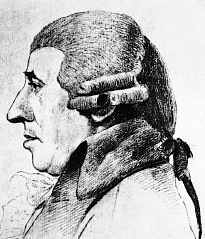Franz Joseph Haydn, Symphony No. 99 in E-flat (1793)
Minuet movements in Haydn’s symphonies often seem to take us on a small mental journey from the ballroom to the countryside, with the genteel demeanor of the minuet countered by the more rustic mood of the trio. In the minuet and trio of Symphony No. 99, Haydn appears to poke fun at this division by reversing it. It is the minuet that seems a bit bumptious and clumsy, the trio that exudes suave charm.

Minuet The a section of this |: a :|: b a′ :|, or ternary, form begins with question-
Trio After these repeated cadences, two oboes are left hanging on a single note. One of them takes up, along with the violins and accompanied by the other strings, an alluring, legato tune; there is no trace here of insistence or rude response. The music, also, slides from the oboes’ note into an unexpected key, adding to its sense of distance from the mood of the minuet. The trio, like the minuet, is in ternary form (that is, |: c :|: d c′ :|), though it is a shorter one than in the minuet, without repeated cadences.
Minuet When the trio ends, Haydn has carried us so far from the key — and the feeling — of the minuet that he needs a brief passage of transition to help bring us back. This is an unconventional addition to minuet and trio form, but Haydn was a composer never unwilling to bend the rules, as we saw also in the miniature development section that breaks out in the variations movement from “The Surprise” Symphony. Then the minuet is played again unchanged, except for the omission of repeats: | a | b a′ |.